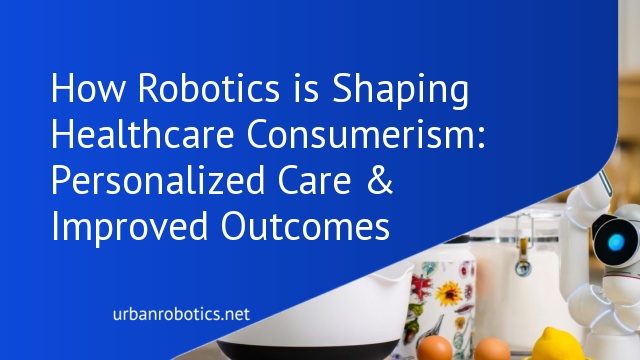Understanding Healthcare Consumerism
Healthcare consumerism revolves around patients actively participating in their healthcare decisions. Patients seek greater transparency, better experiences, and personalized care. This evolution has led to healthcare providers adapting to meet these rising expectations.
Patients demand more control over their treatment plans and access to health data. Mobile health apps and patient portals exemplify these changes, offering users real-time information and custom care recommendations. This shift has propelled the implementation of advanced technologies.
Robotics in healthcare exemplifies this change by providing precise surgical interventions, efficient diagnostic tools, and tailored rehabilitation programs. Automated robotic systems reduce human error, enhancing patient safety and satisfaction. Trends show a dramatic increase in surgery success rates due to robotic assistance.
Healthcare consumerism emphasizes value, quality, and accessibility. As patients become more informed, they leverage Internet resources to compare healthcare providers and treatment options, driving providers to maintain high standards and cost-effective services. This dynamic interaction fuels continuous improvements in healthcare systems.
The Role Of Robotics In Healthcare
Robotics plays a pivotal role in transforming healthcare, offering precision, efficiency, and enhanced patient outcomes. Leveraging advanced technologies, robotics addresses complex medical tasks with high accuracy.
Key Technologies In Healthcare Robotics
Robotics in healthcare employs various advanced technologies. Surgical robots (e.g., Da Vinci Surgical System) perform minimally invasive surgeries with precision. Diagnostic robots aid in image analysis and patient monitoring, showing real-time results. Rehabilitation robots (e.g., Lokomat) assist patients in recovery, providing tailored therapy.
Current Applications And Innovations
Robots are applied extensively in today’s healthcare, driving innovations. Surgical robots enhance complex surgery success rates, reducing recovery time. Telepresence robots offer remote consultations, bridging geographical gaps. Pharmacy robots automate medication dispensing, increasing accuracy and efficiency. These applications reflect an ongoing trend towards integrating robotics for better patient care and system efficiency.
Benefits Of Robotics For Healthcare Consumers
Robotics offers multiple benefits for healthcare consumers, enhancing patient care, reducing costs, and personalizing treatments for improved outcomes.
Enhanced Patient Care
Robots deliver high precision in surgical procedures, minimizing errors and reducing recovery times. Autonomous robots assist in complex diagnostics, providing accurate results swiftly. Rehabilitation robots support tailored physical therapy regimens, aiding patient recovery with consistent, controlled movements. These advancements empower patients to achieve faster, better recovery outcomes.
Cost Efficiency And Access
Robots reduce operational costs by performing tasks with greater accuracy, decreasing the necessity for repeat procedures. Automation cuts labor costs and optimizes resource allocation in healthcare facilities. By improving efficiency, robots make healthcare services more accessible to a broader population, expanding reach without proportionally increasing costs.
Personalized Treatment
Robotics enables customized healthcare solutions by leveraging patient data analytics. Surgical robots can adjust to individual anatomical variations, ensuring precision. Diagnostic robots analyze patient-specific data to provide accurate and personalized treatment recommendations. These tailored approaches enhance overall patient satisfaction and treatment effectiveness.
Challenges And Limitations
Healthcare consumerism with robotics presents several challenges and limitations that we need to address to fully realize its benefits.
Ethical Considerations
Robotics in healthcare raises important ethical questions. We must consider patient consent, data privacy, and autonomy. Ensuring robots follow ethical guidelines while interacting with patients is essential. Additionally, the decision-making process of AI-driven robots requires transparency to maintain trust. The implementation of robotics may also lead to job displacement, creating ethical dilemmas about workforce transitions and the future role of healthcare professionals.
Technical Barriers
The adoption of robotics in healthcare faces significant technical barriers. High costs of development and implementation can limit accessibility for smaller healthcare providers. Maintenance and software updates are crucial to ensure robots function accurately and safely. Furthermore, integration with existing healthcare IT systems can be challenging, especially when dealing with interoperability issues. Technical training for healthcare staff is also necessary to maximize the efficacy and safety of robotic systems.
Future Trends In Healthcare Robotics
Future trends in healthcare robotics promise to revolutionize the industry, offering innovative solutions that can elevate patient care, improve outcomes, and enhance system efficiency.
Emerging Technologies
Emerging technologies in healthcare robotics include AI-powered surgical robots, autonomous mobile robots, and robotic exoskeletons. AI-powered surgical robots enable minimally invasive procedures with high precision, reducing recovery times. Autonomous mobile robots assist in logistics, transporting medical supplies, and reducing human error. Robotic exoskeletons aid in rehabilitation, helping patients regain mobility faster. These advancements are driven by machine learning, image processing, and sensor technologies.
Potential Impact On Healthcare Consumerism
Robotic advancements are set to significantly impact healthcare consumerism by empowering patients with more informed choices and better care experiences. Personalized robotic surgery can cater to specific patient needs, increasing satisfaction. Autonomous robots in diagnostics and logistics streamline hospital operations, reducing wait times and improving service quality. Robotic rehabilitation offers tailored recovery programs, promoting quicker and more effective healing. These innovations align with the growing demand for transparency, efficiency, and personalized care in healthcare.
Conclusion
As we navigate the future of healthcare consumerism, the integration of robotics stands out as a transformative force. With advancements in AI-powered surgical robots, autonomous mobile robots, and robotic exoskeletons, we’re on the brink of a new era in patient care. These innovations promise not only improved outcomes but also a more personalized and transparent healthcare experience.
Addressing the ethical and technical challenges is crucial for widespread adoption. However, the potential benefits far outweigh these hurdles. As healthcare providers and patients alike embrace these technologies, we can look forward to a more efficient and patient-centric healthcare system.
By leveraging machine learning and sensor technologies, we empower patients with informed choices and tailored recovery programs. The future of healthcare is bright, and robotics will play a pivotal role in shaping it. Let’s embrace this change and work together to enhance our healthcare experiences.





